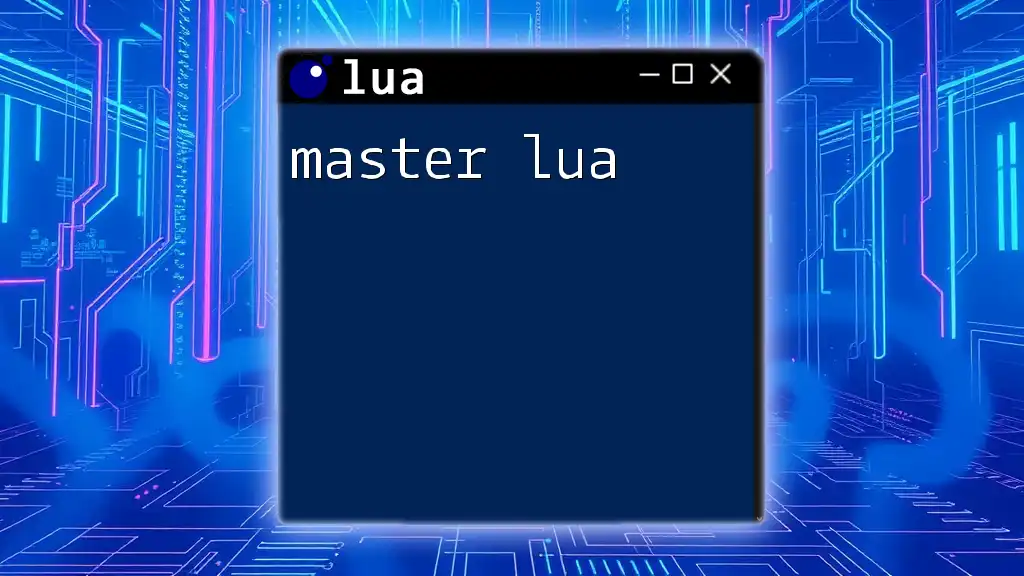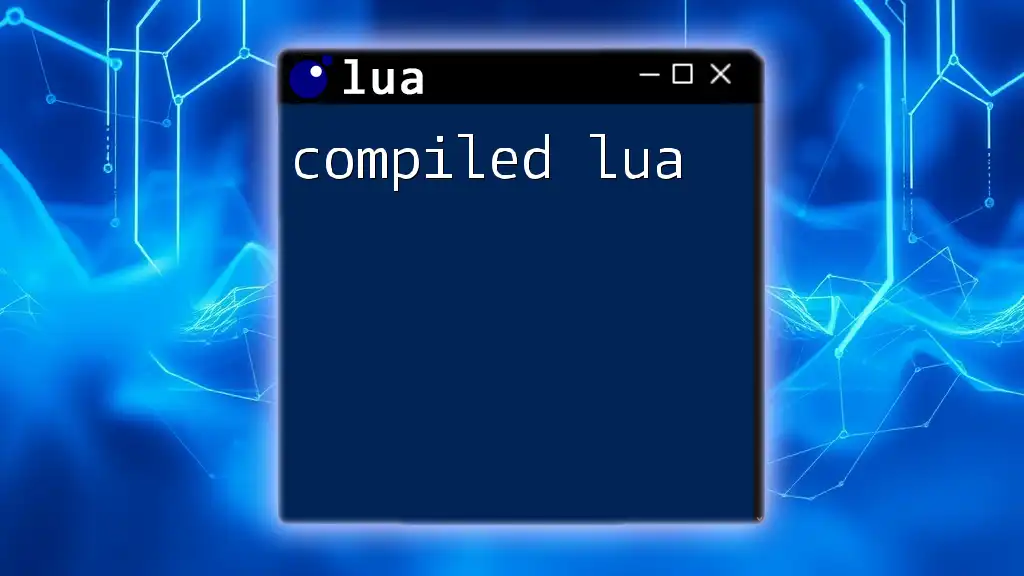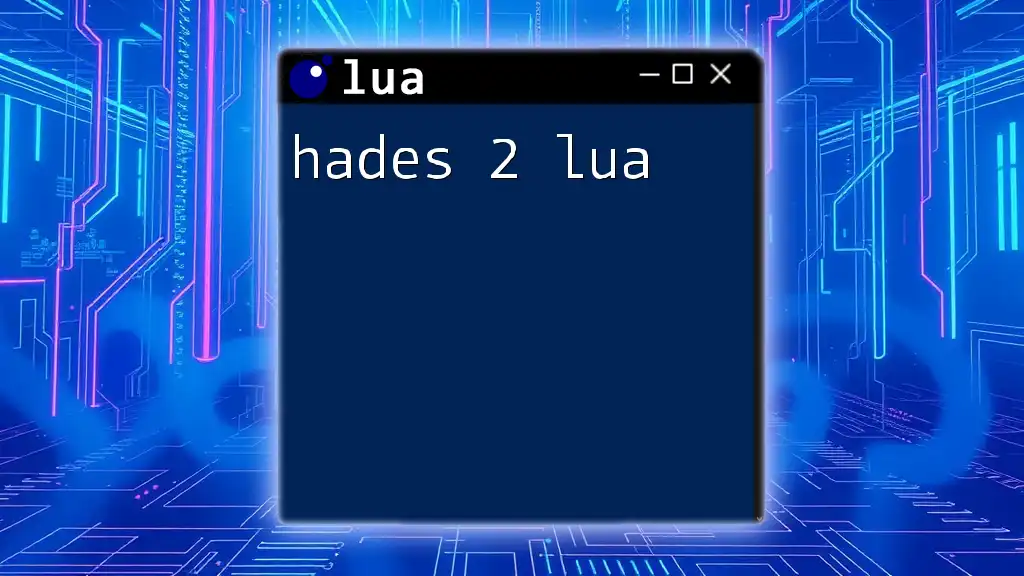Lua is renowned for its speed and efficiency, making it an ideal choice for applications requiring quick execution and low memory usage. Here’s a simple example demonstrating how to measure execution time in Lua:
local start = os.clock()
-- Your Lua code here
for i = 1, 100000 do
local temp = i * 2
end
local finish = os.clock()
print("Time taken: " .. (finish - start) .. " seconds")
Why is Lua So Fast?
Lightweight Execution Model
One of the primary reasons for the speed of Lua is its lightweight nature.
-
Memory Management: Lua employs automatic garbage collection, which helps streamline memory usage. This means that the programmer doesn’t need to manage memory manually, significantly reducing the potential for memory leaks and making the execution process smoother. Automatic garbage collection enhances speed since unused memory is reclaimed automatically, allowing the program to free up resources efficiently.
-
Small Core: Lua's minimalistic design reduces overhead, allowing for faster execution. The core of Lua consists of a small set of primitive types and functions, enabling the programming language to operate with less complexity. This simplicity allows for improved performance, especially in love for embedded systems where resources are constrained.
Just-In-Time (JIT) Compilation
Another compelling factor influencing the speed of Lua is Just-In-Time (JIT) compilation.
-
How JIT Works: JIT compilation optimizes program execution by compiling code during runtime rather than before. This allows the Lua environment to analyze the code being executed and make optimizations based on actual usage patterns. As a result, executing code can be dramatically faster compared to traditional interpretation methods.
-
LuaJIT: LuaJIT is a highly optimized version of Lua that incorporates JIT compilation. It enhances the performance of Lua scripts considerably by translating Lua bytecode into machine code, ultimately boosting speed. LuaJIT often achieves performance close to that of C, making it particularly valuable in performance-critical applications.
-
Example Snippet:
-- A simple LuaJIT example demonstrating speed local function fib(n) if n < 2 then return n end return fib(n - 1) + fib(n - 2) end print(fib(10)) -- Calculate Fibonacci of 10
This demonstrates how even a recursive function can perform efficiently, showcasing Lua's ability to optimize execution during runtime.
Efficient Data Structures
Lua’s data structures play a critical role in its speed.
-
Tables: Lua's tables are both arrays and dictionaries, making them versatile and memory-efficient. They can dynamically grow and shrink, allowing the language to manage memory efficiently as the program runs. The ability to use a single structure for multiple purposes means there's less overhead compared to languages that require different structures for arrays and objects.
-
Example Snippet:
-- Example of using tables in Lua local fruits = {"apple", "banana", "cherry"} for i, fruit in ipairs(fruits) do print(i, fruit) end
Using tables in this manner demonstrates how you can efficiently store and retrieve data, which enhances overall performance.

Comparison with Other Languages
Lua vs. Python: Performance Analysis
When comparing the speed of Lua to other popular languages such as Python, distinct differences emerge.
-
Benchmarks consistently show that Lua can outperform Python in various scenarios, especially where minimal latency is crucial, like in gaming or real-time applications. This is largely due to Lua's design choices optimized for speed.
-
Example Benchmark: For instance, consider the following simple loop written in both Lua and Python:
-- Lua Loop local sum = 0 for i = 1, 1000000 do sum = sum + i end print(sum)# Python Loop sum = 0 for i in range(1, 1000001): sum += i print(sum)Generally, the Lua implementation tends to execute faster due to its lightweight nature and efficient use of memory.
Lua vs. JavaScript: A Speed Perspective
In the realm of web applications, comparing Lua with JavaScript also highlights unique advantages.
-
Synchronous Execution: Lua's synchronous nature can lead to faster performance in certain computational tasks. While JavaScript employs asynchronous patterns, which are highly beneficial for UI-driven applications, Lua's straightforward execution model can outpace JavaScript in numerically intensive computations.
-
Code Comparison:
-- Lua Code for i = 1, 10000 do end// JavaScript Code for (let i = 0; i < 10000; i++) {}The Lua loop may execute faster than JavaScript due to less overhead from managing asynchronous operations.

Profiling and Optimizing Lua Code
Tools for Performance Profiling
To truly leverage the speed of Lua, developers should utilize performance profiling tools, such as:
-
Luajit Profiler: This powerful profiling tool enables developers to see where time is being spent in their programs. It offers insights into performance bottlenecks, making it easier to optimize code.
-
Tracing: Using tracing can improve performance by optimizing the hot paths in the code, which are executed most frequently. By caching results or making fewer function calls on these paths, you can significantly enhance execution speed.
Best Practices for Fast Lua Coding
Applying best practices is essential for getting the most out of Lua's speed. Here are key points to remember:
-
Avoiding Global Variables: Global variables in Lua are slower than local variables because accessing the global environment requires more time and overhead. Always declare local variables where possible; this can noticeably speed up execution.
-
Using Numeric for Loops: Numeric for loops (`for i = 1, n do`) are significantly faster than generic for loops. They are optimized and should be the default choice when iterating over numeric ranges.

Conclusion
The speed of Lua remains one of its defining features, driven by its lightweight execution model, JIT compilation, and efficient data structures. By choosing to implement Lua in performance-critical applications or embedded systems, developers can enjoy faster execution and memory efficiency.
Embracing best practices and utilizing profiling tools will further elevate performance. As Lua continues to gain traction in gaming, web development, and other domains, it presents a compelling choice for developers aiming for speed and efficiency in their projects.

Call to Action
If you're eager to enhance your Lua skills and leverage its speed benefits, consider signing up for our comprehensive Lua command courses. Explore downloadable resources and guides to accelerate your learning journey further!

















